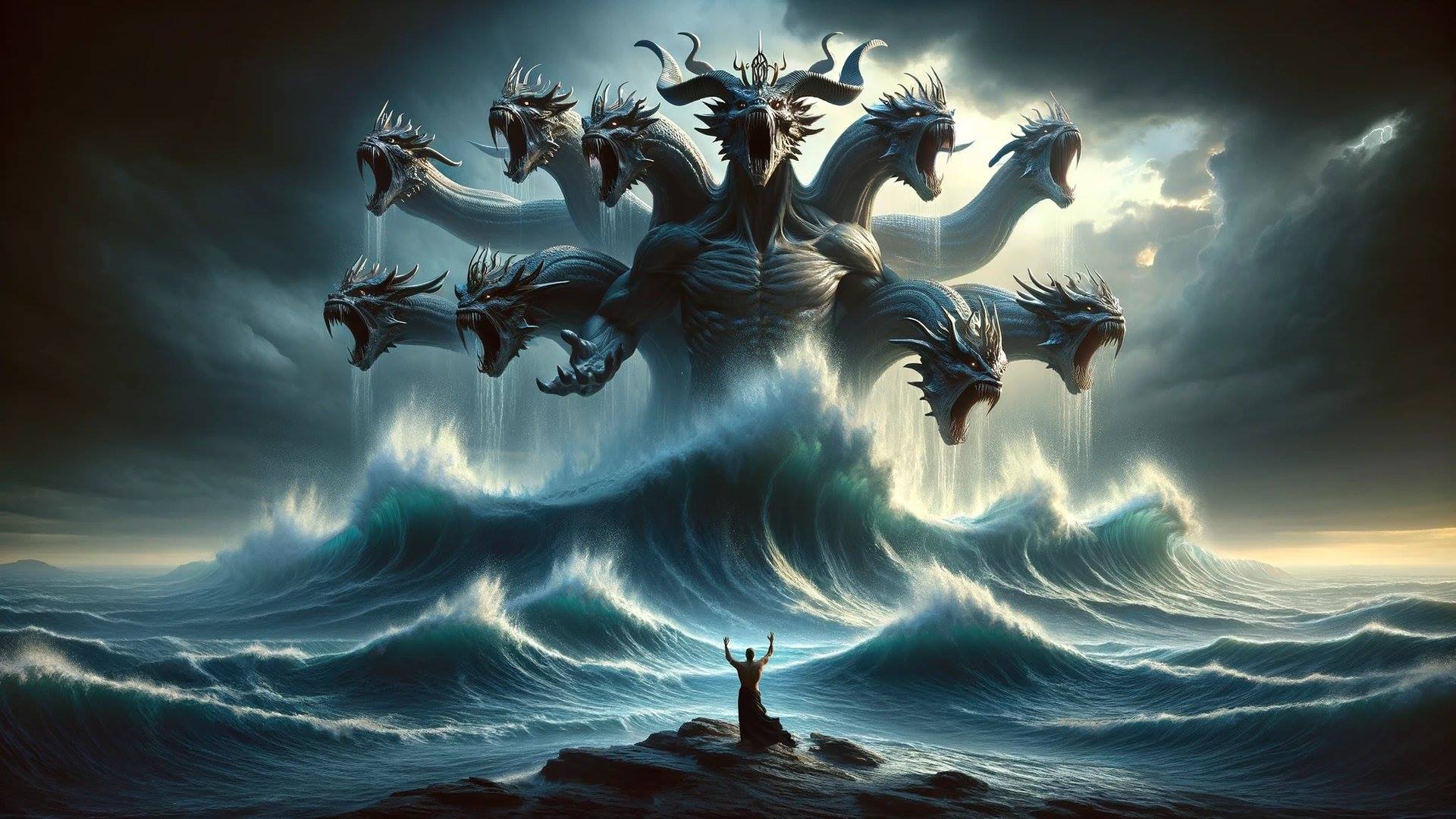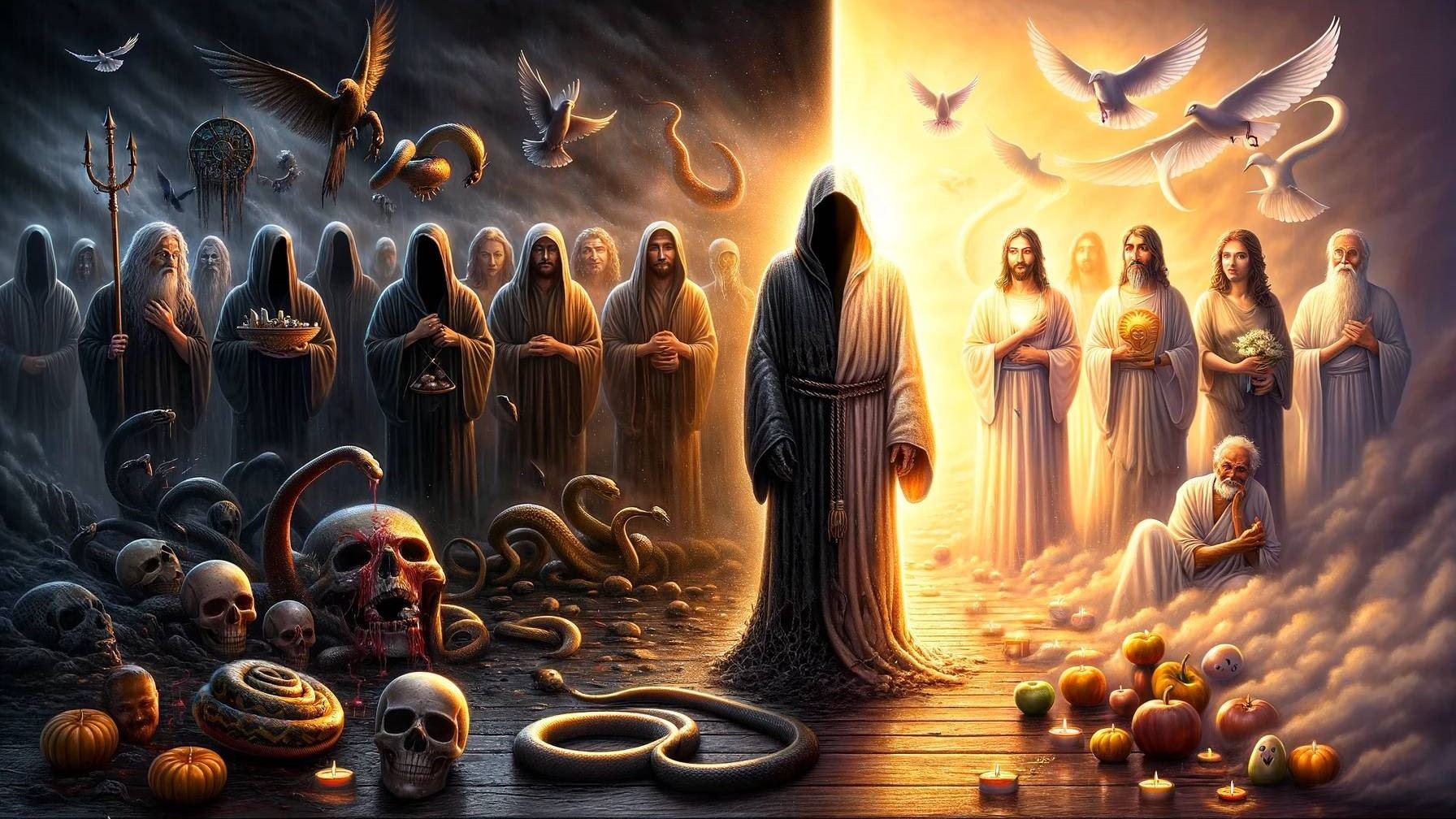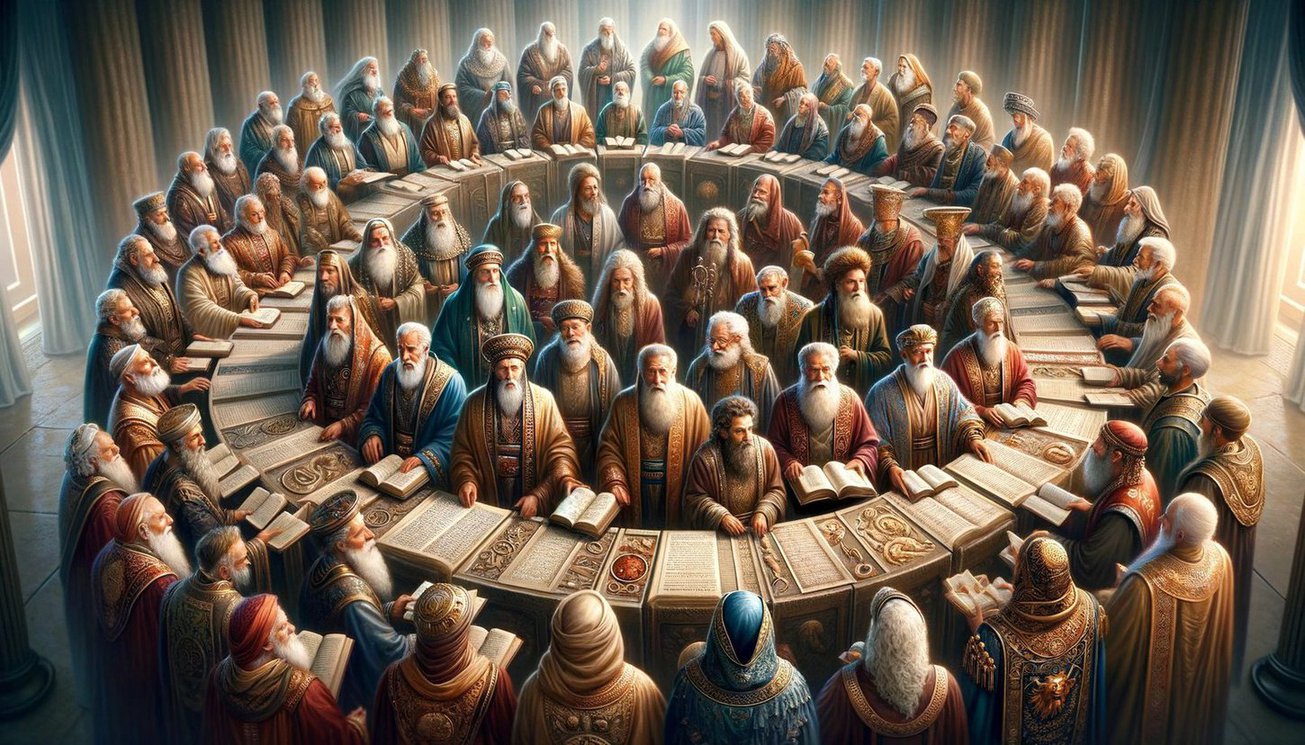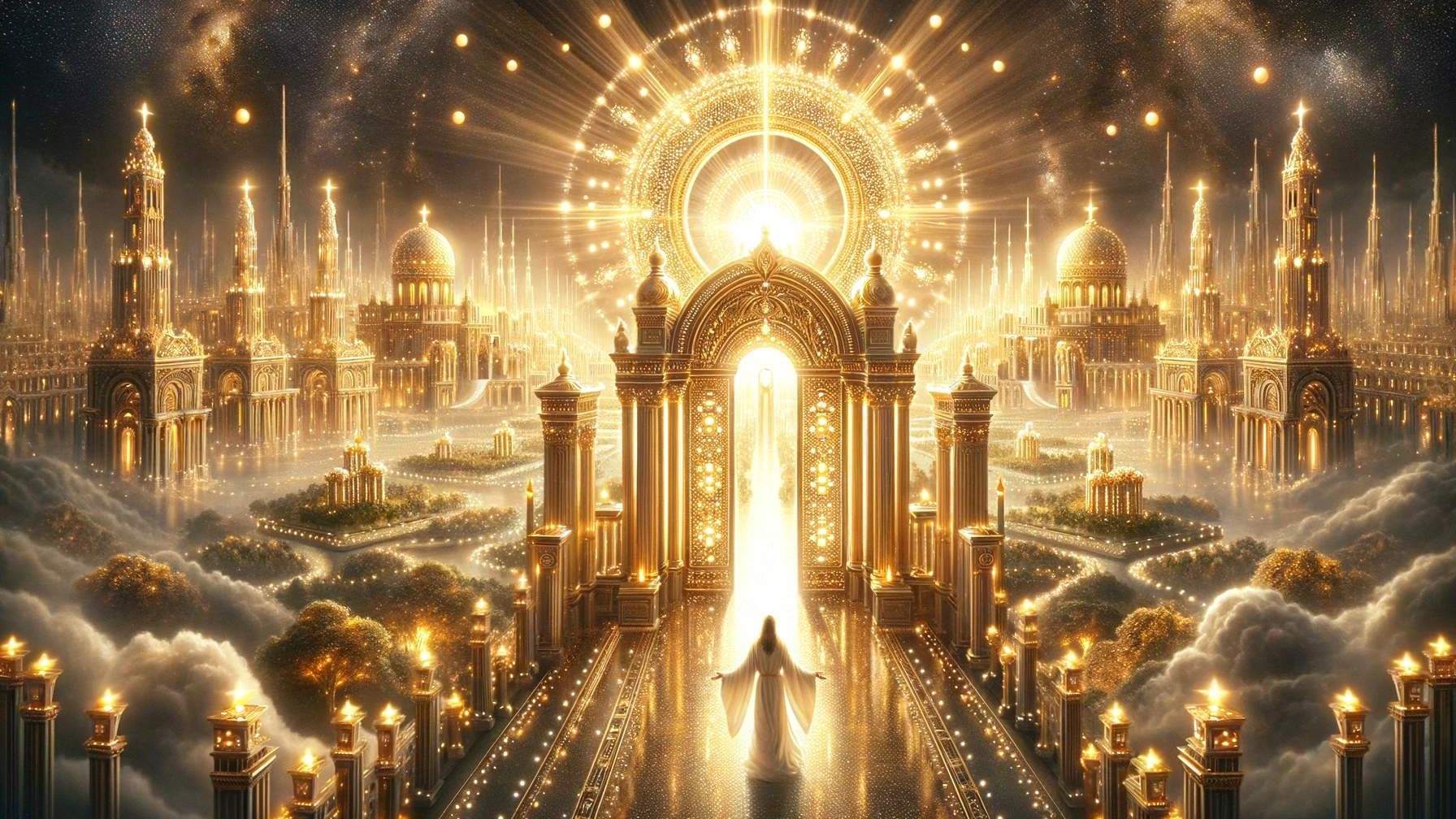Home>Bible Facts>Who Is The Woman In Book Of Revelation
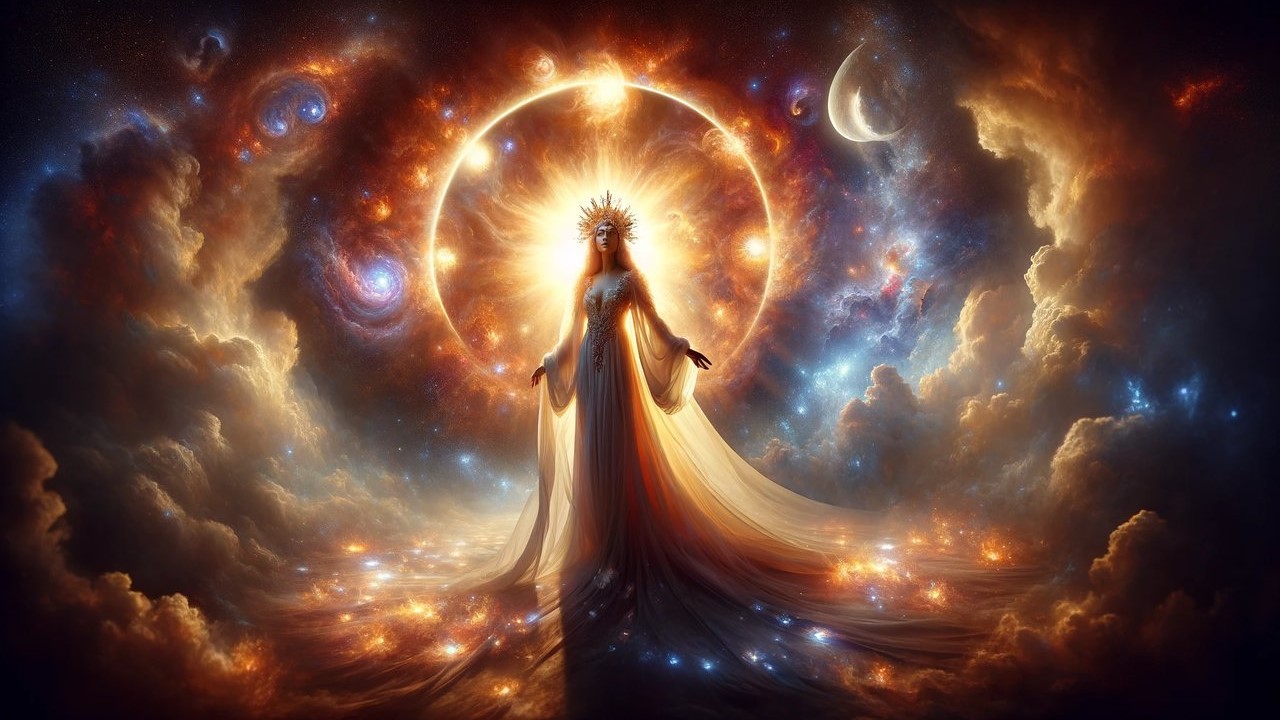

Bible Facts
Who Is The Woman In Book Of Revelation
Published: February 11, 2024
Peter Smith, Editorial Director at Christian.net, combines deep insights into faith, politics, and culture to lead content creation that resonates widely. Awarded for his contributions to religious discourse, he previously headed a major organization for religious communicators, enhancing dialogue on faith's societal impacts.
Discover the identity of the woman in the Book of Revelation and explore fascinating Bible facts. Uncover the mystery and significance of this enigmatic figure.
(Many of the links in this article redirect to a specific reviewed product. Your purchase of these products through affiliate links helps to generate commission for Christian.net, at no extra cost. Learn more)
Table of Contents
Introduction
The Book of Revelation, the final book of the Christian Bible, is a rich tapestry of symbolism, prophecy, and apocalyptic visions. Among its enigmatic figures, the woman described in Revelation 12 stands out as a captivating and mysterious character. This woman, adorned with the sun, standing on the moon, and crowned with twelve stars, has sparked intense curiosity and diverse interpretations throughout history.
As we delve into the significance of the woman in the Book of Revelation, we will uncover the layers of meaning and explore the various perspectives that have emerged over the centuries. This exploration will shed light on the profound symbolism and theological implications associated with this enigmatic figure, offering a deeper understanding of her role in Christian theology and eschatology.
The woman in Revelation 12 is a captivating and enigmatic figure, whose symbolism has intrigued theologians, scholars, and believers for centuries. As we embark on this journey of discovery, we will unravel the complexities surrounding her identity, significance, and enduring impact on Christian thought and interpretation.
The Woman in Revelation 12
Revelation 12 introduces a striking vision of a woman clothed with the sun, standing on the moon, and adorned with a crown of twelve stars. This vivid imagery immediately captures the reader's imagination, evoking a sense of mystery and wonder. The woman is depicted as being in the throes of childbirth, with the dragon poised to devour her child as soon as it is born. This dramatic portrayal sets the stage for a cosmic battle between the forces of good and evil, with the woman at the center of the unfolding drama.
The symbolism surrounding the woman in Revelation 12 has sparked intense debate and speculation throughout history. Many interpretations have emerged regarding the identity of the woman, with some viewing her as representing the nation of Israel, while others see her as a symbol of the Virgin Mary. Additionally, some scholars interpret the woman as a personification of the church, while others view her as a celestial figure embodying divine wisdom and the faithful community of believers.
The woman's association with celestial elements such as the sun, moon, and stars has led to diverse interpretations, with some linking her to ancient mythological motifs and others emphasizing her cosmic significance within the framework of apocalyptic literature. Her portrayal as a mother in labor underscores the theme of spiritual birth and the struggle against malevolent forces, adding depth to her symbolic role in the cosmic narrative presented in Revelation.
Overall, the woman in Revelation 12 emerges as a multifaceted and enigmatic figure, embodying layers of symbolism and theological significance. Her presence serves as a focal point for exploring profound themes of divine protection, spiritual warfare, and the ultimate triumph of good over evil. As we continue to unravel the complexities surrounding the woman in Revelation 12, we gain a deeper appreciation for the rich tapestry of imagery and meaning woven into the apocalyptic vision presented in the Book of Revelation.
Interpretations of the Woman
The woman described in Revelation 12 has been the subject of diverse and thought-provoking interpretations throughout history. This enigmatic figure, adorned with celestial imagery and engaged in a cosmic struggle, has sparked intense speculation and theological discourse. Among the myriad interpretations, several prominent perspectives have emerged, each offering unique insights into the identity and significance of the woman in Revelation.
One prevalent interpretation views the woman as a representation of the nation of Israel. Proponents of this view point to the imagery of the twelve stars, symbolizing the twelve tribes of Israel, and the woman's portrayal as giving birth to a male child, often associated with the Messiah. This interpretation underscores the historical and covenantal significance of Israel within the broader narrative of salvation history, positioning the woman as a symbol of God's chosen people and their enduring role in the divine plan.
Another compelling interpretation identifies the woman as a symbol of the Virgin Mary. This perspective emphasizes the maternal and protective aspects of the woman's portrayal, aligning her with the revered figure of Mary in Christian tradition. The imagery of childbirth and the impending threat to the child by the dragon resonates with the narrative of Mary's role in the birth and protection of Jesus, reinforcing the deeply cherished theological connections between the woman in Revelation and the revered mother of Christ.
Furthermore, some interpretations present the woman as a personification of the church, symbolizing the faithful community of believers. This perspective highlights the spiritual and communal dimensions of the woman's identity, emphasizing her role as a beacon of divine protection and perseverance amidst the cosmic conflict depicted in Revelation. The imagery of the woman adorned with celestial elements underscores the transcendent and universal nature of the church, positioning her as a powerful emblem of spiritual fortitude and divine grace.
Additionally, certain interpretations emphasize the cosmic and celestial dimensions of the woman's symbolism, drawing parallels to ancient mythological motifs and celestial archetypes. This perspective situates the woman within the broader framework of apocalyptic literature, highlighting her role as a celestial figure embodying divine wisdom and cosmic significance. The imagery of the sun, moon, and stars evokes timeless mythic motifs, infusing the woman's portrayal with cosmic grandeur and archetypal resonance.
In essence, the diverse interpretations of the woman in Revelation 12 reflect the richness and complexity of biblical symbolism, inviting contemplation and dialogue on profound theological themes. Each perspective offers a compelling lens through which to explore the enigmatic figure of the woman, illuminating her multifaceted significance within the intricate tapestry of apocalyptic vision and divine revelation.
The Woman as a Symbol
The woman depicted in Revelation 12 serves as a profound and multifaceted symbol within the rich tapestry of biblical imagery. Her portrayal as a celestial figure adorned with the sun, standing on the moon, and crowned with twelve stars imbues her with cosmic significance and archetypal resonance. As a symbol, the woman embodies a convergence of theological, historical, and mythic dimensions, inviting contemplation and interpretation across diverse theological traditions.
At its core, the woman symbolizes divine protection and the enduring struggle against malevolent forces. Her depiction as being in the throes of childbirth amidst the looming threat of the dragon underscores the theme of spiritual birth and the relentless opposition to God's redemptive plan. This symbolic narrative resonates with the broader theme of cosmic conflict and the ultimate triumph of good over evil, positioning the woman as a beacon of divine providence and unwavering resilience in the face of adversity.
Furthermore, the woman's association with celestial elements such as the sun, moon, and stars elevates her symbolism to cosmic proportions. The imagery of the sun symbolizes radiant glory and divine illumination, evoking the transcendent nature of the woman's role within the cosmic narrative. Standing on the moon signifies her dominion over the earthly realm, while the crown of twelve stars alludes to her connection with the twelve tribes of Israel and the broader covenantal framework of salvation history. This celestial symbolism underscores the woman's cosmic agency and her pivotal role in the unfolding drama of redemption and eschatological fulfillment.
Moreover, the woman's symbolic resonance extends beyond specific historical or theological interpretations, encompassing universal themes of maternal protection, spiritual fecundity, and divine wisdom. Her portrayal as a nurturing and protective figure resonates with archetypal motifs of the divine feminine, embodying the timeless archetype of the nurturing and protective mother. This universal symbolism transcends cultural and religious boundaries, offering a profound and inclusive vision of divine care and providence.
In essence, the woman in Revelation 12 emerges as a symbol of transcendent significance, embodying layers of theological, cosmic, and archetypal meaning. Her symbolism invites contemplation and interpretation, transcending specific doctrinal frameworks to resonate with universal themes of divine protection, spiritual resilience, and cosmic agency. As a symbol, the woman in Revelation 12 continues to captivate the imagination and inspire profound reflection on the enduring mysteries of divine revelation and eschatological hope.
The Woman's Significance in Christian Theology
The woman depicted in Revelation 12 holds profound significance in Christian theology, serving as a focal point for theological reflection, contemplation, and doctrinal interpretation. Her enigmatic portrayal as a celestial figure engaged in a cosmic struggle has elicited diverse theological perspectives, each contributing to a deeper understanding of her enduring significance within Christian thought and eschatological discourse.
Within Christian theology, the woman in Revelation 12 embodies the archetypal motif of divine protection and spiritual resilience. Her portrayal as being in the throes of childbirth amidst the looming threat of the dragon underscores the theme of spiritual birth and the relentless opposition to God's redemptive plan. This narrative resonates with the broader theological framework of salvation history, emphasizing the enduring struggle between the forces of good and evil and the ultimate triumph of divine providence.
Furthermore, the woman's association with celestial elements such as the sun, moon, and stars underscores her cosmic significance within Christian theology. The imagery of the sun symbolizes radiant glory and divine illumination, evoking the transcendent nature of the woman's role within the cosmic narrative. Her dominion over the earthly realm, symbolized by standing on the moon, signifies her cosmic agency and divine authority, while the crown of twelve stars alludes to her connection with the twelve tribes of Israel and the covenantal framework of God's redemptive plan.
In addition, the woman's significance in Christian theology extends to her role as a symbol of divine protection and maternal care. Her portrayal as a nurturing and protective figure resonates with the theological themes of God's providential care and the enduring maternal love embodied in the figure of the Virgin Mary. This maternal symbolism underscores the profound theological connections between the woman in Revelation and the broader narrative of divine care, protection, and the ultimate victory of God's redemptive plan.
Overall, the woman in Revelation 12 holds enduring significance in Christian theology, embodying profound theological themes of divine protection, spiritual resilience, and cosmic agency. Her symbolism invites contemplation and theological interpretation, offering a rich tapestry of meaning that resonates with the broader theological narrative of salvation, eschatological hope, and the ultimate triumph of God's redemptive purposes.
Read more: Who Was The Book Of Revelation Written For?
Conclusion
The woman in the Book of Revelation, as depicted in chapter 12, emerges as a captivating and enigmatic figure whose symbolism transcends specific historical or theological interpretations. Her portrayal as a celestial figure adorned with the sun, standing on the moon, and crowned with twelve stars embodies cosmic significance and archetypal resonance, inviting contemplation and interpretation across diverse theological traditions. Throughout history, the woman has been the subject of diverse and thought-provoking interpretations, each offering unique insights into her identity and significance within the broader framework of biblical symbolism and eschatological vision.
The multifaceted interpretations of the woman in Revelation 12, ranging from her representation of the nation of Israel to her symbolism as the Virgin Mary and the personification of the church, underscore the richness and complexity of biblical imagery. Each perspective offers a compelling lens through which to explore the enigmatic figure of the woman, illuminating her multifaceted significance within the intricate tapestry of apocalyptic vision and divine revelation. Furthermore, her symbolism as a beacon of divine protection, spiritual resilience, and maternal care transcends specific doctrinal frameworks, resonating with universal themes of divine providence and cosmic agency.
In Christian theology, the woman holds profound significance, embodying archetypal motifs of divine protection and spiritual resilience. Her portrayal as being in the throes of childbirth amidst the looming threat of the dragon underscores the enduring struggle between the forces of good and evil, emphasizing the ultimate triumph of divine providence. Additionally, her association with celestial elements and maternal symbolism underscores the profound theological connections between the woman in Revelation and the broader narrative of divine care, protection, and the ultimate victory of God's redemptive plan.
In conclusion, the woman in Revelation 12 stands as a timeless and enigmatic symbol, inviting contemplation, interpretation, and theological reflection. Her enduring significance within Christian theology and eschatological discourse underscores the profound mysteries of divine revelation and the universal themes of spiritual resilience, cosmic agency, and the ultimate triumph of God's redemptive purposes. As readers continue to explore the depths of her symbolism and theological resonance, the woman in Revelation 12 remains a captivating and enduring figure, inviting contemplation and interpretation across diverse theological traditions and spiritual perspectives.


